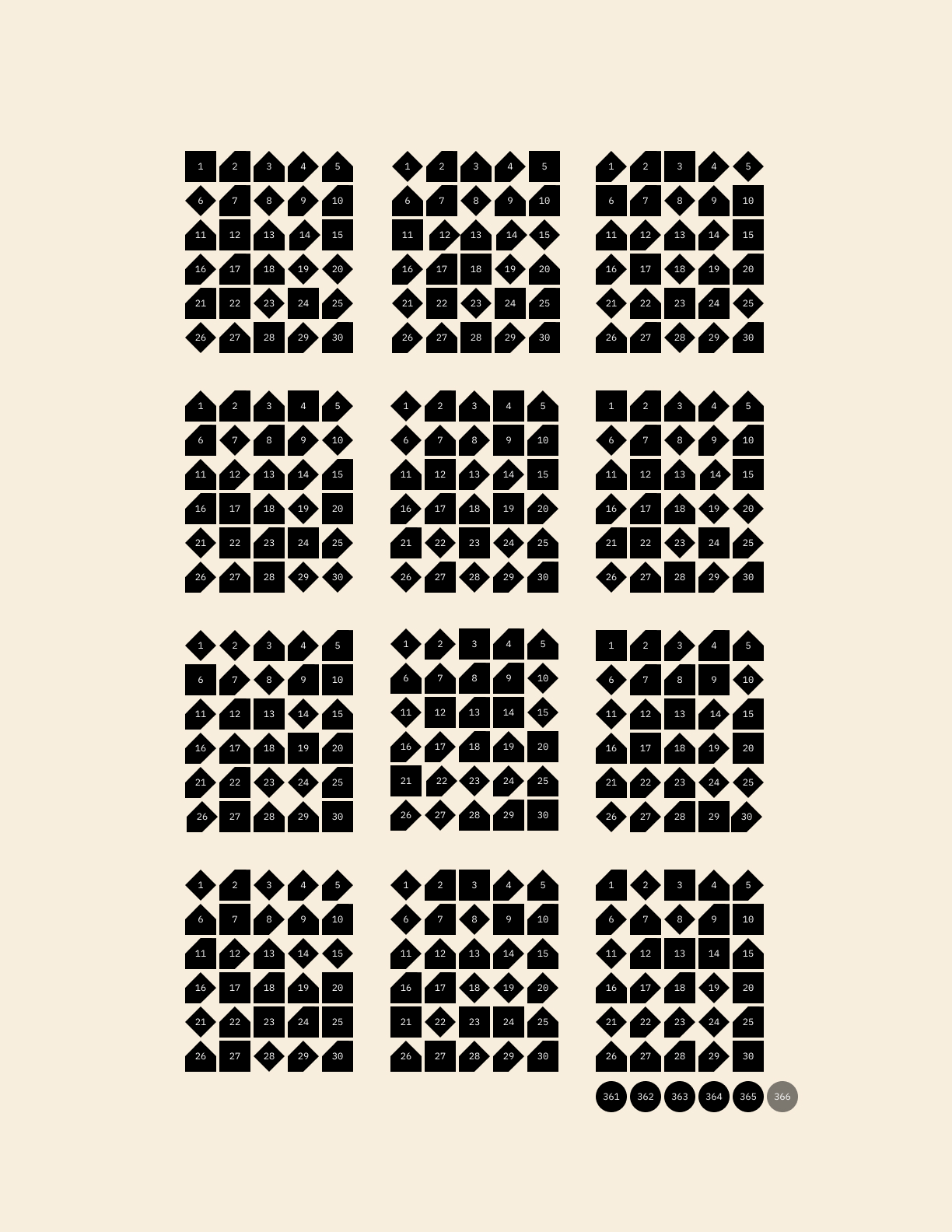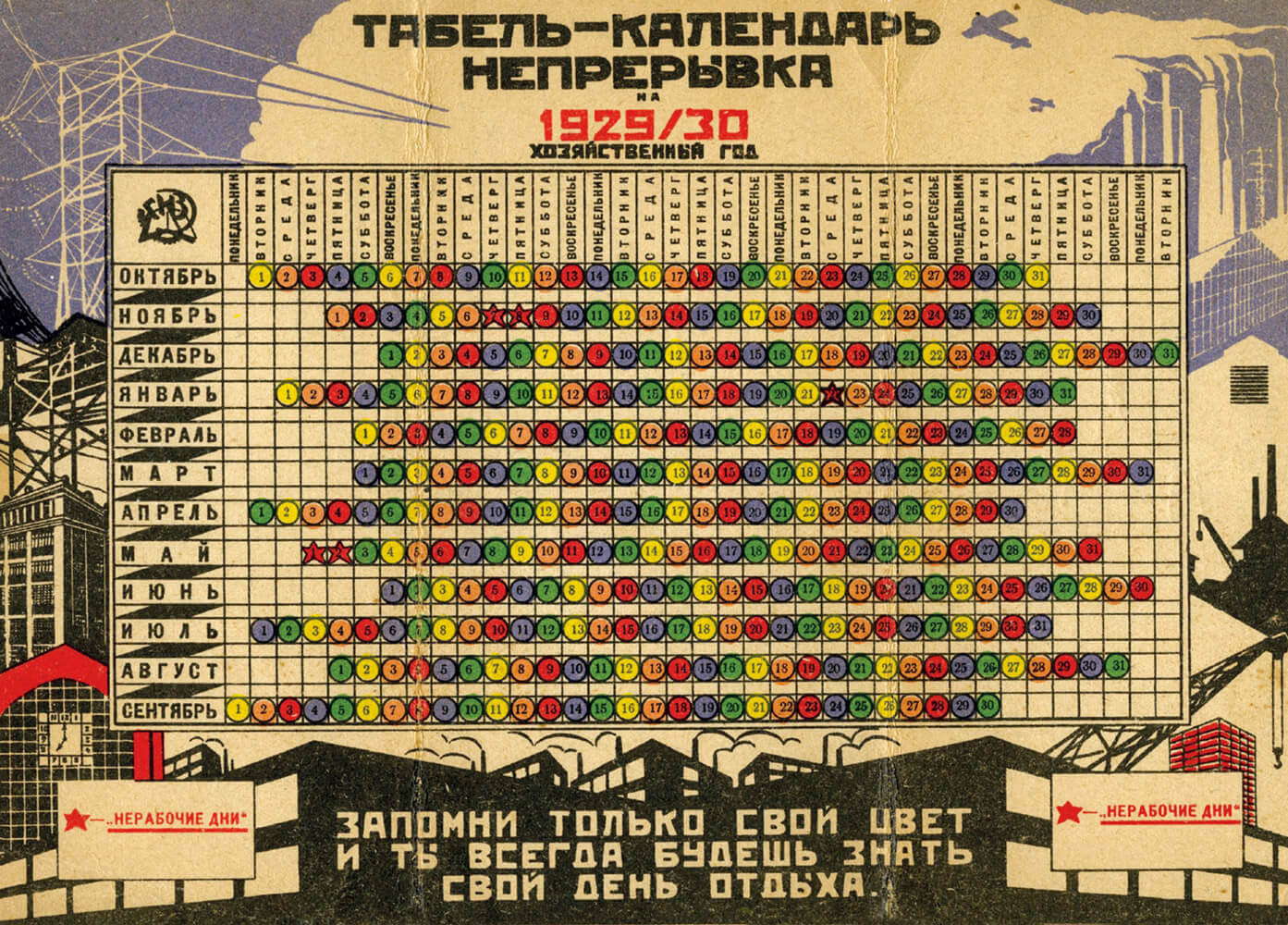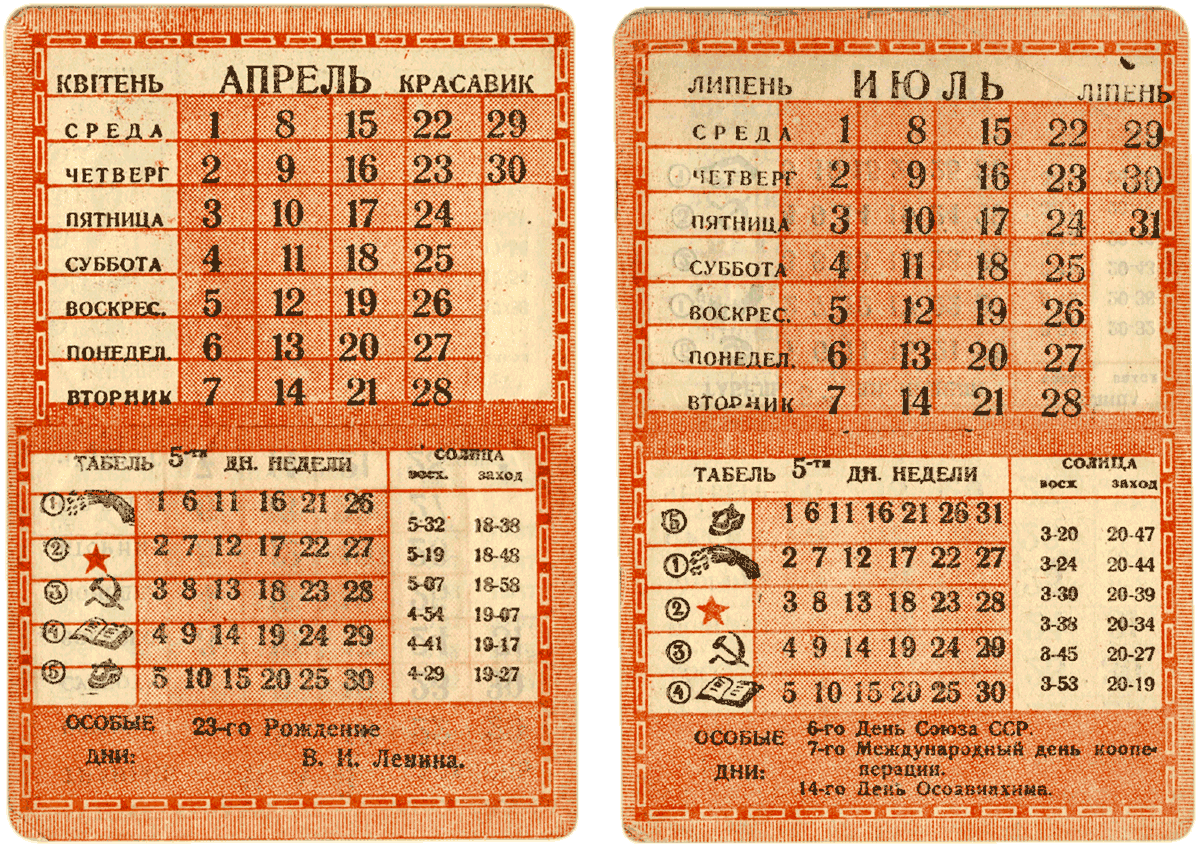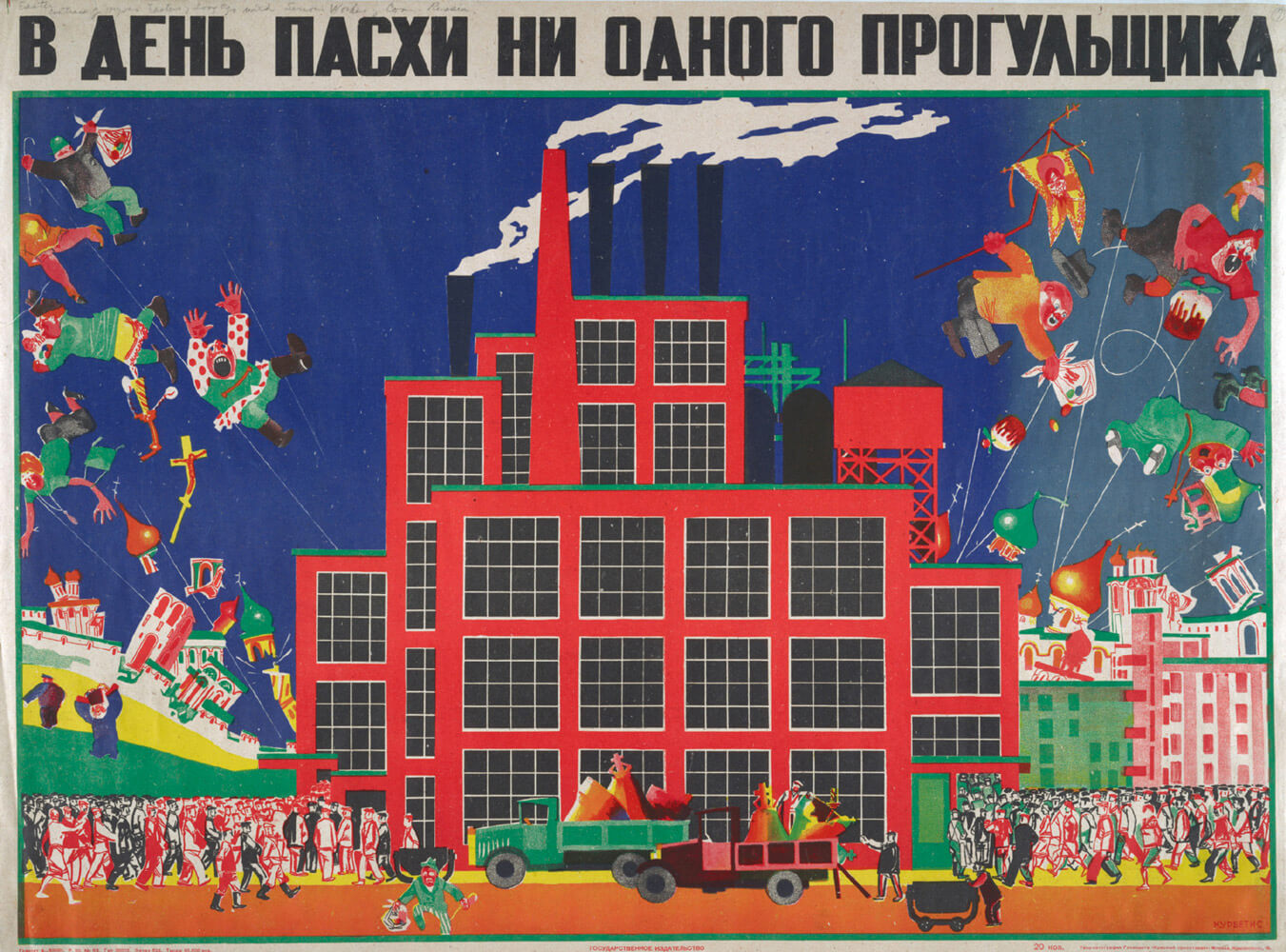
Project by Kalyani Tupkary. Website built by Jon Packles.

Here every month looks different - an arbitrary arrangement of
five types of days. One such day is a personal day of pause.
Listen to the Voicemail
It was in May of 1929, at the fifth Congress of the Soviets of
the Union, that it was proposed to alter the existing work-week
in order to utilize expensive machinery in the factories more
effectively and so raise productivity. The proposer, Larin,
managed to interest Stalin in the project and on 26 August of
the same year, the Council of People's Commissaries announced
that the old work-week would be abolished and be replaced by a
continuous production week known as 'nepreryvka'. A decree of 24
September modified the proposal by replacing the sevenday cycle
with a five day one. The workers were issued with coloured
slips of paper to tell them which day to take off: yellow,
orange, red, purple, and green. They were to observe a day off
on the day that fell on their colour.
While it did increase productivity as intended (80 per cent of
the country was working at any given time), it disrupted social
system by segregating families and friends, workers were
demoralized, and machines could not be routinely maintained.
However, there were two main disadvantages to nepreryvka. First,
it had a profound, disruptive, and unwelcome effect on family
and social life; members of the same family, friends, or
marriage partners, who had been given different colours.
Although the Soviet workers got more time off than then Western
counterparts they were rarely able to spend time together.



- Image 1: Calendar for 1929–1930 showing rest days for each of the five worker groups, designated here by different colors. In this version of nepreryvka, the continuous workweek, workers had every fifth day off.
- Image 2: Left- The month of April from a 1931 worker’s pocket calendar. Here, the five different work groups are represented by five symbols—a sheaf of wheat, a red star, the hammer and sickle, a book, and a budenovka, or wool military cap. Courtesy Erast Butakov. Right- The month of July from the same 1931 worker’s pocket calendar. Here, the five different work groups are represented by five symbols—a sheaf of wheat, a red star, the hammer and sickle, a book, and a budenovka, or wool military cap. Courtesy Erast Butakov.
- Image 3: Calendar for 1929–1930 showing rest days for each of the five worker groups, designated here by different colors. In this version of nepreryvka, the continuous workweek, workers had every fifth day off.
- Courtesy of Tony Wood